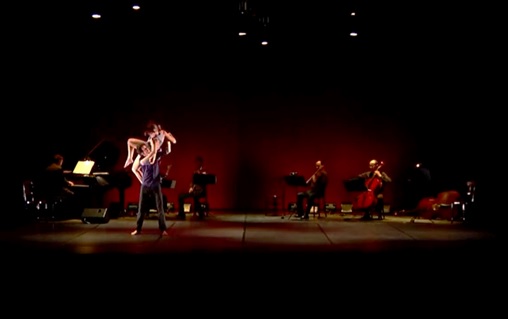PIAZZOLLA PROGRAM

THE PIAZZOLLÍSSIMO TANGO OF ASTOR PIAZZOLLA
Tango, the most genuine musical expression in metropolitan Argentina, and more specifically in the city of Buenos Aires, found in the composer Astor Piazzolla (Mar de Plata, 1921-1992) a reformer who gave it renewed vitality and linked Other musics such as jazz or classical European music, without losing, but quite the contrary, the strength and essence of this sound and gestural expression, born from the musical miscegenation that lived there at the end of the 19th century.
With African roots, related to the Cuban habanera and the traditional Argentine milonga, tango developed in the slums of the Argentine capital, especially in the area near the port, which explains the rapid spread to the European continent. This acceptance gave him respectability in his country of origin, and he began to perform in theaters and cabarets. Then it became very popular, thanks to the fame of some of its exponents.
Piazzolla, of simple origin, soon became an excellent musician since his father gave him a bandoneon at the age of ten. Trained in the renowned tango group of Aníbal Troilo, he continued his musical studies with Alberto Ginastera, one of the greatest Argentine composers, and later, in France, with the prestigious pedagogue Nadia Boulanger who encouraged him to continue cultivating the popular inspiration of his music.
Based on traditional tango, he began to enrich it with a more modern language, giving it a more authentic depth and meaning, at the same time much more diversified, at a time when he had fallen into a predictable mood.
Las Estaciones Porteñas (1969), referring to Buenos Aires, represent the different faces of the city in the temporary landscape, also symbolizing a state of mind full of changing nuances. Composed separately, they have become one of the most popular works, especially lately, with the version of the violinist Gidon Kemer, who performs them alternately with the homonymous pieces by the illustrious Vivaldi. The arrangement for piano string quartet that we present is due to cellist José Bragato, the composer’s own partner.
Adiós Nonino (1961) is, without a doubt, his best-known composition and versioned over and over again, starting with himself. It is a very emotional piece, written in the recent memory of the death of his father, Nonino, with whom he had a very close relationship.
Four, for tango is the only original work for a string quartet, a formation that traditionally calls for perfection in writing and in which it manages to merge the spirit of tango, stylized in its peculiar vision, with a language fully incorporated into the aesthetic currents of your time.
The captivating Milonga del Ángel (1966) and the fast-paced ricercar of La Muerte del Ángel (1962), a character who perhaps symbolizes the mystery of inspiration, close this program dedicated to one of the greatest and, without a doubt, the most popular composer Argentine of the last century.
1 La Muerte del Ángel (arrangements José Bragato)
Las Cuatro Estaciones Porteñas (arr. José Bragato)
2 Verano porteño
3 Otoño porteño
4 Invierno porteño
5 Primavera porteña
6 Four, for tango
7 Oblivion (arr. Joan Sadurní)
8 Adiós Nonino (arr. José Bragato)
9 Milonga del Ángel (arr. per Joan Sadurní)
